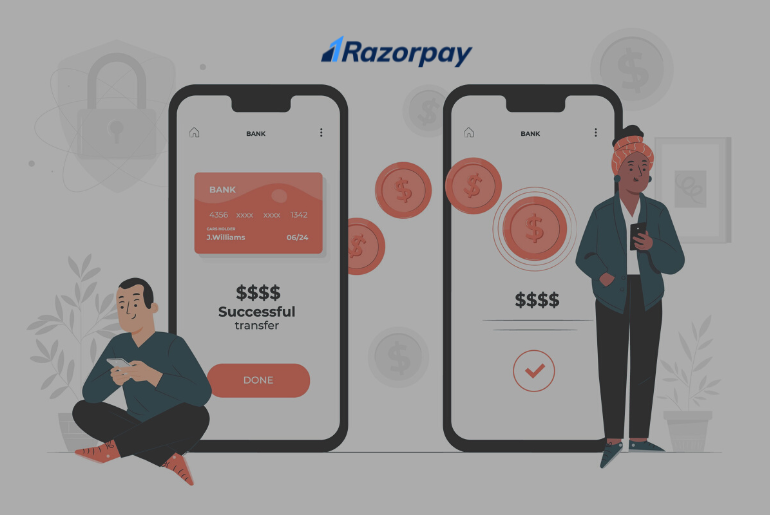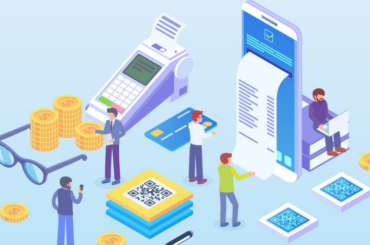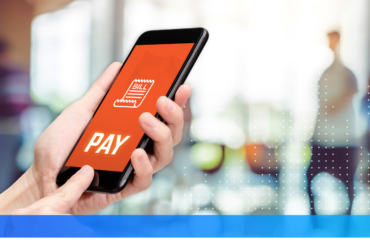The full form of IMPS is Immediate Payment Service, an electronic payment system for transferring funds in India. Launched almost thirteen years ago, this system has functioned as the roadmap to launch FinTech, which is used today. For instance, UPI is a form of IMPS that was only possible with this technology coming in first.
24×7 availability, secure transactions, and seamless bank interoperability are key features of IMPS. Additionally, it also offers real-time fund transfers, reduced cash handling, and more convenience for its users. Let’s understand the meaning of IMPS in detail in the next section.
Table of Contents
What Is IMPS?
The full form of IMPS is Immediate Payment Service. It is an electronic fund transfer service provided by the NPCI (National Payment Corporation of India). It allows seamless money transfers between bank accounts via mobile, internet banking, ATMs, or bank branches.
With IMPS, users can effortlessly move funds, making it a convenient option for instant financial transactions. Its user-friendly nature has made it popular among individuals and businesses alike.
IMPS is available 24/7, so users can make transactions at any time, even on holidays. It is the go-to choice for person-to-person transfers, bill payments, merchant transactions, and more.
Now that you already know what is meaning of IMPS, let’s dive into its features and more.
Features of IMPS
1. Safe and Secure
IMPS transfers are safe and secure, ensuring the money is protected during the transaction process.
2. User-Friendly
IMPS is user-friendly and can be accessed through any smart device with an internet connection, making it easy to use on the go.
3. A Quick Way to Transfer Money
IMPS is one of the fastest modes of money transfer between bank accounts, with the amount instantly credited to the recipient without any delays.
4. No Need for Bank Details
With IMPS, customers don’t need to share bank details like bank account numbers to make transactions, making it a convenient and hassle-free option.
5. 24×7 Service
IMPS is available as a 24×7 service throughout the year, allowing individuals to make transactions at any time.
6. Service Tax
The bank may charge a service tax or a transaction fee while processing IMPS transactions. However, the cost could differ from one bank to another based on the transaction amount.
7. Daily Transaction Limit
Similar to NEFT and RTGS, IMPS has a daily transaction limit fixed by the NPCI and the bank. The limit is assigned for safety implementation purposes. The daily IMPS limit for transactions is ₹5 lakh.
How does IMPS Work?
Now that you have a brief idea of what is IMPS transfer, let’s understand how it works. IMPS is a payment rail for real-time interbank electronic transfers in India.
From a technical perspective, the process consists of the following aspects:
1. The Infrastructure
The National Payments Corporation of India is the central hub and the backbone that looks after the IMPS transactions conducted in the country. They keep a very smooth infrastructure to ensure the smooth functioning of the IMPS transactions, which includes:
1.1 IMPS Switch
It is a highly secured and robust channel by which all the banks establish a valid connection. This channel helps to quickly transfer funds from one place to another and simultaneously transfer transaction-related data.
1.2 Message Broker
It is a routing system incorporated into the IMPS system. It routes information among various participants in the ecosystem.
1.3 Directory Services
It comprehensively records all the participating banks and their technical configuration. It is one of the most explicitly designed centralised databases for all the participants.
2. The Communication Protocol
The Financial Industry Business Messaging Scheme (FIBOS) is the standardised messaging format that ensures banks communicate reliably and securely with the NPCI. FIBOS messages contain information about the sender, data about the beneficiary and the transaction amount, and authentication data.
By adhering to the FIBOS standard, banks guarantee smooth and risk-free exposure, eventually leading to rigorous trust and cooperation across the banking segment. Moreover, this standardised protocol ensures the increased integrity of communication and reliability of transaction processes.
3. The Transfer Process
3.1 Initiation
The sender initiates the transfer via their bank’s mobile app/portal or ATM. Then, the bank’s system will confirm the credentials by verifying their MPIN/OTP and creating an IMPS message enclosing the transaction details in the FIBOS format.
3.2 Message Transmission
The IMPS Switch then securely sends the transfer information to the NPCI, ensuring a secure and efficient transfer process.
3.3 Routing and Validation
NPCI uses directory services to track and route the message to the bank where the beneficiary has the account. At the same time, NPCI validates the bank account, the format of the message and the current balance of the account to meet the transaction needs securely and accurately.
3.4 Authorisation
In the case of successful routing and validation by NPCI, the authorisation message is sent to the bank, allowing its functioning to transfer the funds.
3.5 Funds Debit
The specified amount is debited from the sender’s account, and the bank updates its internal records. Thus maintaining an updated record of actual transactions and managing the rest of the balance.
3.6 Clearing and Settlement
The National Payments Corporation of India uses “clearing and settlement”, to ensure a smooth transfer of funds between banks. Debiting the sender’s account with RBI and crediting through the recipient bank is part of clearing and settlement internally at the IMPS network. This mechanism helps transfer funds in a developed, safe, and secure manner and keeps the records updated between the participating banks.
3.7 Crediting Beneficiary
The beneficiary bank receives the credit message from NPCI and promptly credits the designated amount to the recipient’s account.
3.8 Confirmation
Both the sender and the beneficiary receive confirmation messages stating the successful transfer, ensuring transparency and peace of mind.
4. Security Measures
1. Encryption
The IMPS network integrates secure protocols like Secure Sockets Layer (SSL) or Transport Layer Security (TLS) for encrypted information communication between the parties. Such a data transmission process ensures the data’s confidentiality and integrity, preventing any unauthorised access and interception.
2. Two-Factor Authentication
Two-Factor Authentication requires additional credentials such as mobile MPIN or OTP to perform any transaction, making the account more secure.
3. Message Authentication
Digital Signatures or Message Authentication Codes are used to ensure the integrity of the messages being sent and received and avoid tampering. This makes it more safe and secure.
IMPS Limit Per Day
The daily threshold for IMPS transactions in India stands at ₹5 lakh. Individuals can transfer this amount using internet banking, mobile banking or via their account number. Adhering to this information is crucial for the business’s steady financial process.
Initially, the Reserve Bank of India restricted the IMPS limit per day to ₹2 lakh. However, considering the increasing demand for this payment system, the RBI increased the daily limit for IMPS to ₹5 lakh to meet the growing demand of users and businesses.
IMPS Charges as of 2024
The following are the charges applicable for IMPS, excluding applicable Goods and Service Tax (GST). ₹2.5 will be charged for transactions up to ₹10,000, ₹5 for transactions between ₹10,001–₹1 lakh, and ₹15 for transactions between ₹1 lakh–₹2 lakh.
IMPS Transfer Time
IMPS operates around the clock, 24/7 for every account holder of any bank. Funds are swiftly transferred to the beneficiary instantly upon approval of the transaction by the sender’s bank. However, in rare instances, such as when a transaction becomes void, fails, or times out during the process, resolution may take up to 5 working days.
IMPS Transaction Essentials and Involved Parties
To make a successful transaction, a few requirements need to be met. To begin with, the mobile number needs to be registered with the bank and the user needs to access essential mobile banking services. After registration, the MMID and the MPIN number are provided by a bank.
The Mobile Money Identifier (MMID) is a 7-digit identification number, and the MPIN is a four-digit password that applies to mobile banking.
Add the beneficiaries to the account, link their account details with the registered mobile number and obtain their MMID from the bank.
The beneficiary must submit an Aadhaar number, IFSC, bank account number, mobile number and MMID details to make an IMPS transaction.
IMPS transactions have three main participants and are as follows:
- Remitter: Remitter bank/Prepaid Payment Instruments (PPI)
- Beneficiary: bank/PPI
- National Financial Switch: National Payments Corporation of India (NPCI)
How to Register for IMPS in 2024?
To register for IMPS, follow these steps:
- Register using the mobile banking service provided by the bank.
- Ensure having the bank’s Mobile Money Identifier (MMID) and mobile banking personal identification number (MPIN). For a successful transaction, ensure that the recipient and the beneficiary have them.
- Download a banking mobile application from the bank to utilise the SMS facility if the bank has an SMS IMPS facility.
Steps to Transfer Money Using IMPS in 2024
To transfer money using IMPS in 2024, follow these straightforward steps:
1. Login and Select IMPS
Log in to the mobile application or the website and select the IMPS from the menu. Or use the SMS facility on the mobile if the bank provides IMPS on SMS.
2. Locate Fund Transfer Section
Locate the” Fund Transfer” section inside the app or website. This may be different based on the bank, but it’s usually the place where the individual goes to send money.
3. Choose IMPS as Transfer Method
After that, select IMPS under the fund transfer section. Although the NEFT or RTGS options are also available, choose IMPS for the instant fund transfer.
4. Enter Beneficiary’s Details
- Using MMID & Mobile Number: After selecting the IMPS as the preferred method to transfer, enter the beneficiary’s registered mobile number and their MMID to initiate the transfer.
- Using Account Number & IFSC: However, one can also enter the beneficiary’s bank account number and IFSC code instead of MMID and mobile number. This method provides a conventional way to transfer money with assurance.
5. Enter Transfer Amount
Specify the amount to transfer from the account. Also, review the amount and any other account details (mobile number, MMID, or account number & IFSC) to ensure accuracy.
6. Confirm Transaction
This usually involves entering an MPIN (Mobile Banking PIN) or verifying with a one-time password (OTP) sent to the registered mobile number.
7. Receive Confirmation
After completing all necessary steps, the transfer will be confirmed, and the recipient will receive a confirmation message. Generally, the funds will be transferred immediately to the beneficiary account.
Read More About: How to Transfer Money Using IMPS?
Business Uses of IMPS
1. Fund transfer
IMPS offers two ways to initiate fund transfers:
1.1 Mobile Number and MMID
For this option, the sender and receiver must have registered their mobile numbers with their respective banks. The mobile number and MMID are linked to a unique account number.
1.2 Account Number and IFSC
If the receiver’s mobile number is not registered with their bank, the sender can still use mobile banking to transfer funds by entering the recipient’s account number and IFSC.
2. Commercial transactions
- Check Transaction Status: Senders can quickly check the status of any transaction by initiating a check status request.
- Name Inquiry: The IMPS service also allows for name inquiry using the recipient’s bank account number, IFSC, MMID, and mobile number.
Important Factors to Consider for IMPS
Users must properly understand IMPS meaning before making the payment. Along with meaning, also consider these factors while making IMPS transactions:
1. Mobile Banking Access
To use IMPS from mobile banking, users must have mobile banking access. IMPS can be conducted using mobile banking, which allows one to make transactions quickly and conveniently.
2. Irreversible Errors
The IMPS does not allow to reverse a successful transaction. So, it is essential to double-check all the information provided to prevent losses and ensure accuracy in the transaction.
3. Reliable Internet Connection
A fast and stable internet connection is required to complete the online money transfer with IMPS, preventing any disruptions during the transaction process.
What Are The Benefits of IMPS Payments?
1. Fast & Secure
Make instant transfers with excellent security measures without worrying about providing bank account-specific information. IMPS allows senders to transfer money securely and quickly.
2. 24/7 Convenience
Whether it is a weekend or a holiday, users have the option to make payments at any time of day from anywhere on weekends and holidays using mobile or internet banking or ATM. IMPS is a 24-hour solution that helps to manage funds at the user’s convenience.
3. Versatile Transactions
IMPS serves several purposes, including paying bills, shopping online, sending money to loved ones, or paying for services. IMPS fits various financial needs together compared to physical methods.
4. Cost-Effective
There is a fee when transferring money into another account, but the rate is reasonable compared to other methods. It is cost-efficient and, therefore, a frugal way to handle and save money.
5. Real-time Tracking
Instant notifications are received on the sender’s and receiver’s end as soon as the money is transferred. With IMPS, users can track the status of the money transfer process in real-time.
6. Multiple Identification Options
In addition to a bank account’s full details, users can make payments by using the recipient’s mobile number and MMID. IMPS provides multiple options for the identification process, thus eventually simplifying the process.
IMPS Participating Banks
Here is a comprehensive list of 26 banks in India that actively participate in the IMPS network:
S.No. |
Bank Name |
| 1 | Allahabad Bank |
| 2 | Andhra Bank |
| 3 | Axis Bank |
| 4 | Bank of Baroda |
| 5 | Bank of India |
| 6 | Canara Bank |
| 7 | Catholic Syrian Bank |
| 8 | Central Bank of India |
| 9 | Citi Bank |
| 10 | Federal Bank |
| 11 | HDFC Bank |
| 12 | HSBC Bank |
| 13 | ICICI Bank |
| 14 | IDBI Bank |
| 15 | Indian Bank |
| 16 | Indian Overseas Bank |
| 17 | SBM Bank (India) Limited |
| 18 | Bank of America |
| 19 | Kotak Mahindra Bank |
| 20 | Punjab National Bank |
| 21 | State Bank of India |
| 22 | Syndicate Bank |
| 23 | UCO Bank |
| 24 | Union Bank Of India |
| 25 | Vijaya Bank |
| 26 | Yes Bank Ltd |
These banks facilitate IMPS transactions, providing users with a convenient and immediate means of transferring funds securely through mobile devices.
What Restrictions on Fund Transfers Apply to IMPS?
Compared to RTGS and NEFT, IMPS offers restrictions considering the needs of an average consumer looking to make generic payments.
Have a look at the table below to compare the differences between the three:
Particulars |
RTGS |
NEFT |
IMPS |
| Minimum transaction amount | ₹2 lakh | ₹1 | ₹1 |
| Maximum transaction amount | No upper limit has been placed on RTGS transactions | Transaction limits vary from bank to bank | Transaction limits vary from bank to bank |
As you can see, while RTGS and NEFT may have higher upper limits, IMPS will most likely serve consumers looking to meet their daily transaction needs. The low minimum transaction amount means users can use this system to pay bills at local Kirana (if the vendor allows), shop through apps on mobile phones or send money to the family.
Of course, NEFT and RTGS may be the way to go for sending exorbitant amounts of money. The downside will be the time constraints one must operate within.
Conclusion
We hope this article has helped in understanding what is IMPS in bank. IMPS has changed consumer behaviour and expectations and paved the way for newer forms of instant payment systems to operate in India. The fact that consumers can use this system without needing a smartphone adds to its financial inclusivity, making it a great payment option for the masses!
Frequently Asked Questions (FAQs)
1. Is a bank account required for a client to use IMPS?
Yes, the customer needs to have a bank account with a bank that has enabled the IMPS facility.
2. Does IMPS offer the facility to stop payments on IMPS?
No, it does not let you stop a payment after initiating the payment request since IMPS is an immediate fund transfer service.
3. Where can I file IMPS-related complaints?
You can file complaints for IMPS transactions with the NPCI using their website.
4. What will happen if I send money to the wrong bank account?
In the case of an intra-bank transaction, the bank will directly contact the incorrect recipient and request a reversal. However, if the transfer was made to a different bank, your bank will assist you by providing the necessary information about the incorrect recipient’s bank and branch.
5. What happens if an IMPS transaction runs out or fails?
If an IMPS transaction fails and the customer’s account is debited but the beneficiary’s account is not credited, an automatic reversal should be initiated within one day after the transaction date.
6. Is IMPS transfer free?
IMPS transfers are not entirely cost-free. A few banks, such as SBI, do not charge any costs for such transfers. However, the fee for IMPS transfers varies depending on the amount transferred.
7. Which bank is best for IMPS?
Top banks like ICICI Bank, HDFC Bank, and SBI are reliable choices for IMPS due to their comprehensive coverage and user-friendly services.
8. What information do I need to provide to send money via IMPS?
You’ll need the recipient’s mobile number and MMID to make a successful IMPS payment. Alternatively, you can also transfer money using a bank account and IFSC code.
9. Can I use IMPS to transfer funds internationally?
No, IMPS is strictly for domestic transfers within India. Consider NEFT, RTGS, or international wire transfers for overseas transactions.
10. Can I cancel an IMPS transaction?
No, you cannot cancel a successful IMPS transaction because the transaction is done in real-time.
11. How can I check the status of an IMPS transaction?
Use your bank’s online portal or mobile app to track real-time IMPS transactions.
12. Is there any customer support available for IMPS-related queries or issues?
Each bank has its own customer support helpline to address any doubts or complaints about IMPS transactions.
13. Can I set up recurring payments using IMPS?
Yes, you can easily set up regular payments for bills or subscriptions through IMPS.





